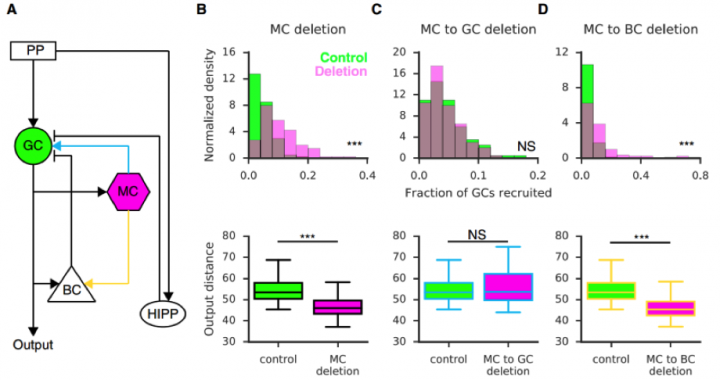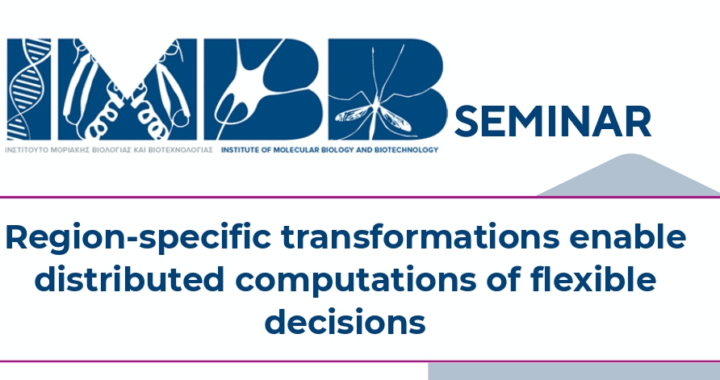Research at the Institute of Molecular Biology and Biotechnology in collaboration with Columbia University published in the scientific journal Neuron reveals the role of mossy cells in environment discrimination in awake, behaving animals. Researchers combined experimental with computational methods in order to study the function of these excitatory cells.
Hippocampus is a key brain area involved in memory formation, storage and retrieval; however the exact mechanisms that mediate these processes remain highly elusive. The incoming information flows into hippocampus through its trisynaptic loop via dentate gyrus, CA3 and CA1. Dentate gyrus has been widely implicated in pattern separation, a computational process of distinguishing similar information, that is believed to underlie the animal’s ability to discriminate between similar environments. Previous studies have shown that granule cells are responsible for this task; however another type of neurons in the dentate gyrus called mossy cells seem to mediate this function as they receive strong excitatory inputs from granule cells.
IMBB PhD student Mr. Spyridon Chavlis in the lab of Dr. Panayiota Poirazi, developed a simple, yet biological relevant, computational model of the dentate gyrus that examines how mossy cells are involved in pattern separation. In collaboration with Dr. Attila Losonczy and his group, who performed the in vivo imaging of mossy cell activity in behaving mice, the researchers showed that mossy cells are significantly more active than granule cells and exhibit spatially organized firing during navigation which differs among two environments. Using a computational model the researchers revealed a crucial role of mossy cells in pattern separation; when lesioned the model lost its ability to distinguish overlapping stimuli. In conclusion, researchers showed that mossy cells are an active, place-coding population engaged in contextual encoding and discrimination. This study is the first that investigates the role of this enigmatic neuronal type in awake, behaving mice.




